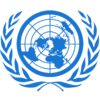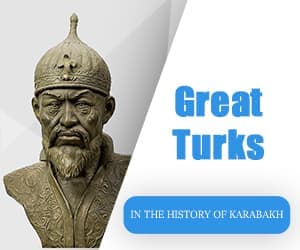On November the 3th the President Armenia Sargsyan showed everyone how his country creates myths about the conflict in Karabakh, counting on the short memory of the international community. Documents show that out of 14 facts, voiced by Sargsyan about the history of Karabakh, 9 contain obvious lies.
On the evening of November 3, Armenian President Armen Sargsyan gave an interview to the TV channel of the Russian news portal RBC. He began by saying that the roots of the Karabakh conflict go deep into Soviet history and stated the following:
«The current problem was created in 1920. As the Soviet Union leadership at that time decided, Karabakh was given as a part to the Azerbaijani Soviet Socialist Republic. Then it was possible to solve it. Then Azerbaijan had 70 years – 70 years, more than 70 years, in order to create the necessary conditions for the peaceful coexistence of Armenians and Azerbaijanis in Karabakh. In 1920 there were about 350 thousands people in Karabakh, 90-95% of them were Armenians. In 1990 there were only 150 thousands people living there. People left the place. Naturally, they left because there was nothing for them in there. No Armenian schools were working. Young people had no opportunities to work, to build their lives, to start a family. So people were leaving. And after the collapse, the collapse of the Soviet Union, events began that became completely clear indicators of Baku’s goals. Mass ethnic cleansing of Armenian people. I am talking about the end of 1980s in Sumgait, Baku, Maraga. I am talking about the refugees – more than a million of Armenians escaped Azerbaijan, escaped all of those cities…».
Qarabag.com conducted a thorough examination of the statements made by the Armenian President for compliance with the real facts. Below are the main points of the historical part of his speech in relation to the documents of that era.
«The current problem was created in 1920. As a decision of the leadership of that time of the Soviet Union, Karabakh was given to the part of the Azerbaijan Soviet Socialist Republic».
- The decision on Nagorno-Karabakh was made not in 1920, but following the voting of the Caucasian Bureau of the Central Committee of the Russian Communist Party, held on July 5, 1921.
- The decision, that was made July 5, 1921 was not to «give» Nagorno-Karabakh to the Azerbaijan Soviet Socialist Republic, but to «leave Nagorno-Karabakh within the Azerbaijan SSR» [From the minutes of the meeting of the Plenum of the Caucasian Bureau of the Central Committee of the RCP (b) // On the history of the formation of the Nagorno-Karabakh Autonomous Region of the Azerbaijan SSR (documents and materials). Baku, 1989. p. 92].
- The fate of Nagorno-Karabakh was determined not by the decision of the top leadership of the Soviet Union (which de jure did not yet exist at that time), but by a real vote of the members of the Caucasian Bureau. The evidence of this is in the results of voting by members of the same bureau the day before. Then the participants of the meeting, defending each of their points of view, failed to reach the agreement. Therefore, it was decided to hold one more vote on Nagorno-Karabakh – on July 5. If the decision was made on the highest level in advance, it would have been approved at a meeting on July 4th.
- 7 members of the Caucasian Bureau voted on July 5th: three Georgians, two Russians, one Azerbaijani and one Armenian. The Armenian, Amayak Nazaretyan, voted on a meeting on July 4th for «To leave Karabakh within Azerbaijan» [From the minutes of the meeting of the Plenum of the Caucasian Bureau of the Central Committee of the RCP (b) // On the history of the formation of the Nagorno-Karabakh Autonomous Region of the Azerbaijan SSR (documents and materials). Baku, 1989. Pp. 90-91].
- The Armenian Soviet leader Anastas Mikoyan, after whom one of the streets of Yerevan is now named, wrote back in May 1919 to the leader of Soviet Russia, Lenin: «The Dashnaks – agents of the Armenian government are seeking the annexation of Karabakh to Armenia, but for the population of Karabakh it would mean losing the source of their life in Baku and to throw their lot with Erivan, with which they have never been connected by anything. The Armenian peasantry at the Fifth Congress decided to recognize and also join Soviet Azerbaijan» [From the report of the member of the Caucasian Regional Committee of the RCP (b) A. I. Mikoyan of the Central Committee of the RCP (b) and the chairman of the Council of People’s Commissars V. I. Lenin // On the history of the formation of the Nagorno-Karabakh Autonomous Region of the Azerbaijan SSR (documents and materials). Baku, 1989. P. 16].
- Nagorno-Karabakh was not «given», it was left to be a part of Azerbaijan, because before that, in 1918-1920, it was part of the Azerbaijani Democratic Republic, and even earlier it was the territory of the Karabakh Khanate, which was ruled by the Turks and almost 80% of its population consisted of Turkic people.
- But regarding the neighboring with Nagorno-Karabakh Zangezur, on November 30, 1920 it was decided that this region «goes to Armenia». [From the minutes of the joint meeting of the Politburo and the Organizing Bureau of the Central Committee of the AKP (b) // On the history of the formation of the Nagorno-Karabakh Autonomous Region of the Azerbaijan SSR (documents and materials). Baku, 1989. Pp. 63-64]. And this happened despite the fact that it was not only part of the Karabakh Khanate in the past, but, according to the 1914 census, Muslims made up 56.2% of the population there, and Armenians – only 42.8% [Caucasian calendar for 1915. Tiflis, 1914. Department of Statistics, Pp. 230-233].
«In 1920, 350 thousand lived in Karabakh»
- From 1914 to 1921, no census was carried out in Karabakh.
- In 1921, an agricultural census of the population of the Autonomous Region of Nagorno-Karabakh was carried out. According to census date, the population of this region reached only 135,591 [Kocharyan G.A.,P. 8]. Thus, President Sargsyan has blown up the number of residents of Nagorno-Karabakh by more than 60%.
«90-95 % were Armenians»
- Indeed, according to the 1921 census, 94.4% of the inhabitants of the Autonomous Region of Nagorno-Karabakh were Armenians [Kocharyan G.A., P. 8]. But this is only a part of the reality.
- It is not by chance that Sargsyan starts from 1920, without mentioning what happened before. 100 years earlier Armenians made up for only 21% of the population of Karabakh. In 1828-1830, the Russian authorities carried out a mass resettlement of Iranian and Turkish Armenians to the South Caucasus. Karabakh became one of the main places of their settlement. But despite this, back in 1914 Armenians made up only half of the population in the Shusha district [Caucasian calendar for 1915. Tiflis, 1914. Statistical Department, pp. 230-233], which served as the main territory for the formation of the Autonomous Region of Nagorno-Karabakh. Between 1914 and 1921, the number of Muslims fell from 43% to 5.6%. This happened as a result of the mass expulsion of Muslims from Karabakh in 1918-1920 by the Armenian Dashnaktsutyun party militias.
«In 1990 there were only 150 thousands people living there»
According to the 1989 All Soviet Union Population Census, 188,000 people lived in the Nagorno-Karabakh Autonomous Region at that period. [The national economy of the Azerbaijan SSR in 1988. Baku, 1990. P. 375].
«No Armenian schools were working»
- On July 31, 1923, Armenian was declared the official language of the Autonomous Region of Nagorno-Karabakh [Decree of the AzCEC of Soviets «On the nationalization of state institutions in the ASSR // On the history of the formation of the Nagorno-Karabakh Autonomous Region of the Azerbaijan SSR (documents and materials). Baku, 1989. Pp. 162-163]. In the normative document dated November 26, 1924, which regulated the principles of autonomy management, it was noted: «All office work, court proceedings and education in the schools of the Autonomous Region of Nagorno-Karabakh are conducted in their native language» [Regulations on the Autonomous Region of Nagorno-Karabakh // On the history of the formation of the Nagorno-Karabakh Autonomous Region of the Azerbaijan SSR (documents and materials). Baku, 1989. P. .268]. The fact that the status of the Armenian language has not changed during the years of Soviet power is proved by the «Law of the Azerbaijan Soviet Socialist Republic on the Nagorno-Karabakh Autonomous Region», published in 1981. It states that the language of office work was still the «language of the autonomous region»(pp 49-50).
- The massive opening of secondary schools teaching only in Armenian began in the early years of Soviet power. In 1922, 231 primary / secondary educational institutions with teaching in Armenian functioned throughout Karabakh [Census of educational institutions in Azerbaijan January 31, 1922 – lists of educational institutions. 1st edition: educational institutions. Baku, 1922]. The delivery of educational literature was made from Armenia, but payment was made from the budget of Azerbaijan [From the report of the government of the Azerbaijan SSR for 1922-1923.// On the history of the formation of the Nagorno-Karabakh Autonomous Region of the Azerbaijan SSR (documents and materials). Baku, 1989. P. 141].
- In 1988, 207 schools functioned in the Nagorno-Karabakh Autonomous Region [The national economy of the Azerbaijan SSR in 1988. Baku, 1990. P. 386] – the absolute majority in Armenian. In addition, there were 6 secondary and one higher educational institutions in the region [The national economy of the Azerbaijan SSR in 1988. Baku, 1990. P. 386].
I am talking about the refugees – more than a million of Armenians left Azerbaijan, left all of those cities…
- More than a million of Armenians could not have left Azerbaijan at the end of the 80-s, because, according to the 1989 census there were only 390.505 Armenians there, while 296.148 lived in the cities.
- UN Security Council resolution 822 (30.04.1993) states «with alarm the escalation in armed hostilities and, in particular, the latest invasion of the Kelbadjar district of the Republic of Azerbaijan by local Armenian forces» and expresses «grave concern at the displacement of a large number of civilians and the humanitarian emergency in the region, in particular in the Kelbadjar district».
- UN Security Council resolution 853 (29.07.1993) is «Noting with alarm the escalation in armed hostilities and, in particular, the seizure of the district of Agdam in the Azerbaijani Republic» and is «expressing once again its grave concern at the displacement of large numbers of civilians in the Azerbaijani Republic». The resolution also «condemns the seizure of the district of Agdam and of all other recently occupied areas of the Azerbaijani Republic».
- UN Security Council resolution 874 (14.10.1993) again expresses «its grave concern at the displacement of large numbers of civilians in the Azerbaijani Republic».
UN Security Council resolution 884 (12.11.1993) noted «with alarm the occupation of the Zangelan district and the city of Goradiz in the Azerbaijani Republic».- Not a single UN Security Council resolution on the Karabakh conflict ever mentioned the «massive ethnic cleansing of Armenians» or the fact that «more than a million Armenians left Azerbaijan» despite President Sargsyan’s claim on November 3.




